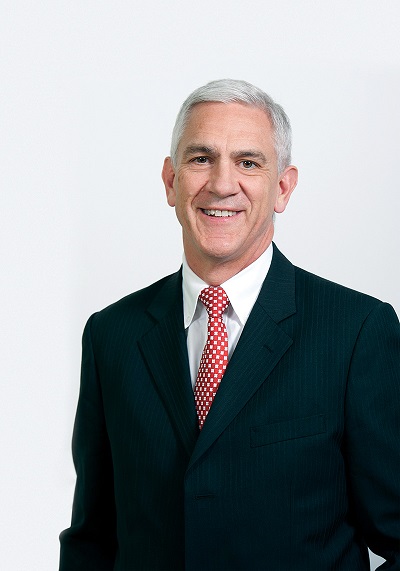
Photo: IBM
How cities can create smart societies
08 October 2013
by Richard Forster
Without new forms of partnership, governance and citizen engagement, administrators will not be able to realise the potential of new technologies to transform their cities. Jonathan Ballantine examines the strategies of the leading smart cities
Over the last ten years we have witnessed a “smart city boom”, largely driven by big technology vendors who have been leading much of the narrative around smart cities through conference presentations, research papers and pilot projects. Not surprisingly, there has been a strong bias towards smart technology being seen as the saviour for urban challenges. But while there have been projects where technology is making a significant difference such as Rio de Janiero’s much trumpeted Operations Center designed by IBM, the practical reality is that some of these projects are failing to add long- term value because they have not been aligned to an overarching strategy and/ or have been implemented in silos with no coordination between city functions. Cities will not be able to address the myriad of complex issues they face through the procurement of a ‘one-stop- shop’ solution.
“There is a need to redress this technology-centric view and develop a more holistic understanding of what citizens and businesses fundamentally value,” says Simon Giles, Global Intelligent Cities Strategy Lead at Accenture. “As an industry we can then work together to define how technology, along with business, governance and finance model innovation, will help realise these outcomes.”
The transformation to smart goes beyond leveraging technology for greater efficiency and it is about building a platform for collaboration that empowers government, citizens and businesses to solve urban challenges more dynamically.
The city of Barcelona has adopted such an approach. Josep Ramon Ferrer, Director of IT and Smart City Programmes for Barcelona Council, dislikes the concept of technology for technology’s sake and believes that smart cities need an integral programme for urban transformation. “Our strategy looks at the city as a system of systems, and addresses 25 sub-sector programmes that encompass the whole city,” says Ferrer. Barcelona’s Smart City vision merges urban planning, ecology, and information technology to improve the lives of citizens, and has already had a large impact in terms of improving both efficiency and quality of life for city residents. “Smart urban planning is first and foremost about improving citizens’ welfare and for supporting economic progress and technology is simply a means to that end,” adds Ferrer.
The city is actively supporting the new City Protocol Society, a 200-strong network of city leaders, businesses, and academics to define a global, cooperative framework among cities, industries and institutions to address urban challenges in a systemic way in areas such as sustainability, self-sufficiency, quality of life, competitiveness and citizen participation. Barcelona has been the driving force behind the project. “Many cities will benefit from participating in this initiative by achieving real improvements and it will help companies to understand the internal structure and management of cities in order to collaborate with us better in the future,” explains Ferrer. “Through the City Protocol, cities of all sizes around the world can contribute to the process of improving the lives of citizens achieving more for less as they become better managers of urban resources.”

In the Netherlands, the city of Almere recognises that a smart city is more about co-creation than technology and has developed a vision for the creation of a “smart society” that will make more intelligent use of technology, people and resources for improved urban management.
“We take an urban-scale view, because creating an ecologically, socially and economically sustainable system will only arise from human alliances,” says Annemarie Jorritsma, Mayor of Almere.
Almere has chosen to call itself a “smart society” rather than “smart city” to avoid the impression that it is only being driven by technology. The city believes that its Smart Society vision can only be realised if it is developed for and by the city’s residents, businesses and institutions. A catalyst for this development is the partnership that the municipality entered into last year with a consortium of industry leaders.
“The cooperation we are developing in the city together with consortium parties will result in the creation of an ‘urban network’ that is focused on economic growth, sustainable urban development, efficient urban management and social innovation and cohesion,” says Mayor Jorritsma.
Building a smarter city
To compete in today ́s world requires city leaders to balance social, economic and environmental expectations, where competitive advantage is directly linked to their ability to deliver basic city services, support economic growth, and increase quality of life for all. For leaders to deliver on these goals and achieve more with less, requires re-thinking urban leadership and governance. In addition, city leaders must engage citizens in the city’s use of information and communication technologies (ICT).
Finland’s Helsinki views itself as a “smart city” where the “smartness” is first and foremost based on people in the urban community. With the help of people participating in the development of the city, smart services and operating practices can be created. “Citizens must be considered as an active part of the community not only as consumers of services, but also as contributors of information, ideas, solutions and innovation. This will be the future: the city as a community,” says Pekka Sauri, Deputy Mayor of Helsinki.
Barcelona has articulated a vision “The City of People”, and sees ICT as an enabler to improve citizens’ welfare and quality of life, and to support economic progress. “An intelligent and integrated management of IT infrastructure is one of the key elements to help us achieve the objectives of the MESSI strategy (Mobility, E-Government, Smart City, Systems of Information & Innovation),” says Ferrer.
Boston in the US has recognised the opportunities for citizen engagement and participation in its strategy for building a smarter city. Through the Mayor’s Office of New Mechanics, the city is pioneering a peer-produced approach to governance by leveraging the power of collaboration and technology to transform citizens’ interaction with government. The award- winning Citizens Connect app enables Bostonians to become the city’s “eyes and ears” by alerting the city to neighbourhood issues such as potholes and graffiti. Santander is Spain is running a similar scheme. There are now plans to develop the application further so that it can detect problems before they are reported.
“Our primary work is in examining how citizens can interact with government and understanding what their needs are,” says Nigel Jacob, Co-chair of the Mayor ́s Office of New Mechanics. “By taking this approach we can then advance how government meets those needs to create user-centric applications.”

A new approach to governance
Smarter approaches also need to be embedded into the governance of cities by taking a holistic approach to the planning and management of city functions by removing silos, shifting a focus from spending to performan ce metrics, and fostering a culture for collaboration. A smarter city requires coordinating initiatives across all departments via a central platform, to enable effective data sharing and joint decision-making.
All relevant stakeholders within the city must be invited to participate in urban decision-making to gain access to greater intelligence. Smarter data sharing is essential for optimising city functions and service delivery. Vienna’s active stakeholder process has been recognised as a major factor in achieving its leading position as a smart city. “Targeted co-operation between public and private entities, between city administration, research institutes and businesses show particularly great promises of success for the road which Vienna has embarked upon,” says Michael Häupl, Mayor of Vienna.
City leaders must also build new partnerships with service providers to realise their strategic visions. Working with an ecosystem of smart service providers can help cities develop citywide systems that address multiple issues. At the same time, service providers need to be brought into to the planning process early enough so that their solutions can achieve optimal results before political solutions have overtaken the most efficient technological route.
In a recent publication Service Providers Accelerate Smart City Projects, Jennifer Bélissent, Principal Analyst, Forrester Research says that smart city service providers need themselves to build ties with a broad set of partners. Such partners can provide specialist domain expertise in such fields as energy, transport, building automation, engineering and resource management. A multiskilled team will serve the holistic approach which innovation requires if it is to properly benefit the city.
Given current economic conditions, the use of innovative financing models with such partners has become an integral part of implementing a smart strategy. Service providers are developing new business models that provide greater flexibility with no upfront capital investment — therefore bringing smart city projects within the reach of cities of all sizes. According to the Forrester study, Accenture worked with the New York Metropolitan Transportation Authority on procurement processes to help the authority save US$70 million. Rather than any upfront payment, Accenture earned an outcome-based commission — a percentage of the savings realised through the project.
CIOs for cities
As part of the new approach to governance and taking a leaf out of the corporate world, cities have begun to appoint managers for their ICT strategies to act as the city’s Chief Information Officer (CIO). The role of a CIO in city government is relatively new as there
has been a lack of understanding and appreciation by city leaders of the value of IT together with a clear definition of the exact role of a city CIO. Research by Marc Cecere, VP and Principal Analyst at Forrester Research, shows that there are four different types of CIOs based on their role in transformation. Cecere illustrates that there are CIOs who focus on implementation (soldiers), those who balance IT and enterprise needs (leaders), those who advise on transformation process (change consultants), or those who run transformation (transformation leaders). “No CIO is purely of one type; each is a combination that will vary with the phase of the transformation and the attributes of the CIO,” says Cecere.
Helsinki has endorsed a new programme that aligns the operations of city departments, public utilities and the group corporates and brings forward the city’s central objectives and development focuses. “The efficient use of ICT is a central priority in this strategy and among the concrete actions was the decision to establish an IT section under the City Board to ensure a sufficient city-level view on major IT acquisitions and strategic development,” says Markku Raitio, CIO for the city of Helsinki. “Another important step for us is the merger of the IT and Communication Divisions into one operational entity with overall responsibility for IT and Communications, including new forms of citizen participation. Our expectations in respect of the value of IT and digitalisation are broader than just IT delivery and transformation.”
It seems just as many cities may be coming to terms with the role of the CIO, increasing demands for innovation around open government and citizen engagement require new forms of leadership. City leaders need the CIO either to come in and take responsibility not only for the use of IT systems but also the broader application of digital technology to service management. There has been much debate on whether the traditional CIO is capable of providing such leadership. “In the US we are seeing a new position being created called the Chief Innovation Officer – that reflects the roles of a CIO internally, but includes aspects needed for economic development, digital inclusion and community broadband,” says Steve Reneker, General Manager of IT in Los Angeles.
Riverside in California was one of the first cities to transition from the traditional CIO to the Innovation Officer, a position Reneker held before being approached to work for Los Angeles. In his new role, Reneker is responsible for technology and collaborates closely with an Innovation Officer to ensure a decentralised structure is run optimally.
What is important is to identify what needs to get done, to understand the benefits of technology (i.e. digital delivery of city services can help governments reduce costs while enhancing citizen experience) and to identify how this can be translated into a strategy that fits with the city ́s culture. The value provided by ICT is a strategic enabler for cities, and therefore it is critical that all cabinet level executives understand the technology. This highlights another reason to appoint a city CIO: he or she can help bridge the gap between the jargon and technical knowledge of the private sector and the management needs of city administrators.
Applying the technology
Technology is a key enabler when aligned with a strategic vision for citizens and the right governance systems. By leveraging technology, city leaders can begin to manage disparate city services through smart unified control systems. The city of Da Nang in Vietnam has one of the country ́s highest population growth rates and is experiencing a boom in tourism. Working in partnership with IBM, Da Nang is applying some of the most advanced technologies in order to deliver on its long-term plan to become an environmentally and economically sustainable city. “Da Nang is leading the way among Southeast Asian cites, moving quickly to build plans and adopt technology to create a more sustainable, efficient community for their citizens,” says Michael Dixon, General Manager, IBM Smarter Cities. “By starting with focused, practical areas such as water and transportation, Da Nang is taking a strategic approach to building a smarter city.”

To relieve traffic congestion Da Nang is investing in its public transit network and expanding its Bus Rapid Transit system. At the heart of the operation is a new traffic control centre that uses IBM’s Big Data technologies and predictive analytics so that city officials can monitor traffic and control the city’s traffic light system through a dashboard. To ensure a high-quality water supply for its citizens, businesses and foreign visitors, the city’s water utility provider is implementing an expansion and modernisation programme at its water treatment facility. Using IBM’s Intelligent Water Solution, the water utility can instantly visualise operations and receive alerts and notifications when analysis indicates that water quality has changed.
Da Nang is planning to expand these pilot projects on a larger scale over the coming decade. “We are confident that by using information in new ways, and through harnessing Big Data and information coming in from many different sources we will be able to manage our growth and emerge as a vibrant and smarter city for our citizens,” says Pham Kim Son, Director of Da Nang Department of Information and Communications.
To interact further with citizens and make information more transparent, Barcelona is working with Microsoft’s CityNext initiative to harness cloud technologies to enhance administrative operations. “We are seeing tremendous innovation in cloud, data and devices that presents new opportunities for us to engage further with citizens and enhance their overall experience,” says Ferrer. Using the Microsoft programme, city residents can download an app to monitor real- time fluctuations in population density, unemployment rates, and other local data, to help make decisions about where to start a business or where to live. “The CityNext initiative puts people first and builds on this new era of collaborative technology to engage citizens, business and government leaders in new ways,” says Laura Ipsen, Corporate Vice President of Microsoft Worldwide Public Sector.
Rapid urbanisation, combined with financial constraints and increasing calls for citizen engagement suggest that top- down projects are a thing of the past. An increasing number of cities are starting to recognise that they must get smarter from the bottom-up. These cities understand that what makes a city really smart goes beyond optimising the performance of individual systems and requires a new model of urban collaboration. This is the key to creating a smart city. As Annemarie Jorritsma, Mayor of Almere, says: “People make the city, not the hardware.”











